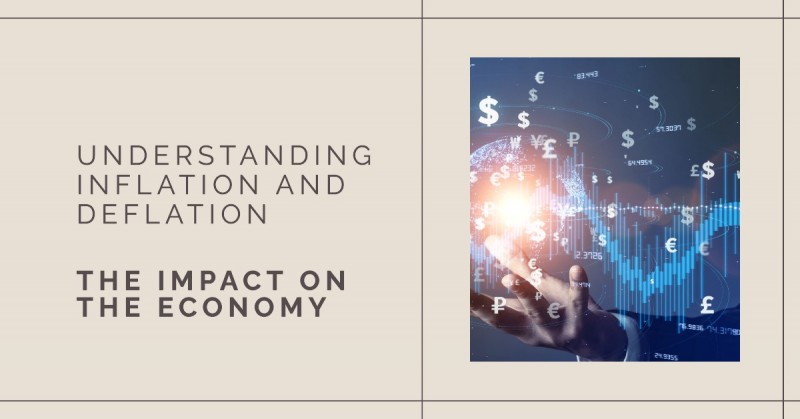
Introduction
Inflation and deflation are two significant economic phenomena that directly affect the overall health and stability of an economy. These forces can have a profound impact on various aspects of society, including purchasing power, investment decisions, and government policies. This article aims to provide a comprehensive understanding of inflation and deflation, exploring their causes, consequences, and strategies to mitigate their effects.
A. Defining Inflation
Inflation refers to the sustained increase in the general price level of goods and services over a specific period. It erodes the purchasing power of money, making it more expensive to buy the same basket of goods over time. Inflation is typically expressed as an annual percentage rate.
B. Causes of Inflation
Demand-Pull Inflation: Occurs when demand for goods and services exceeds supply, leading to price increases.
Cost-Push Inflation: Results from an increase in production costs, such as wages, raw materials, or taxes, passed on to consumers through higher prices.
Built-in Inflation: Arises from expectations of future price increases, leading to higher wages and production costs.
C. Consequences of Inflation
Reduced purchasing power: As prices rise, consumers can buy fewer goods and services with the same amount of money, reducing their standard of living.
Uncertainty: Inflation creates uncertainty in financial planning, making it challenging for individuals and businesses to make long-term decisions.
Redistribution of wealth: Inflation can redistribute wealth from savers to borrowers, as the value of money decreases over time.
Economic inefficiency: Inflation can lead to misallocation of resources and hinder economic growth.
A. Defining Deflation
Deflation is the opposite of inflation and refers to a sustained decrease in the general price level of goods and services. It occurs when the supply of goods and services surpasses demand, leading to falling prices. Deflation is also expressed as an annual percentage rate.
B. Causes of Deflation
Reduced demand: Deflation often occurs during economic recessions or depressions when consumer spending declines significantly.
Technological advancements: Technological progress can increase productivity, reduce production costs, and lead to price deflation.
Tight monetary policy: When central banks reduce the money supply, it can result in deflationary pressures.
C. Consequences of Deflation
Delayed consumption: Deflation incentivizes consumers to postpone purchases as they anticipate lower prices in the future, leading to decreased economic activity.
Debt burden: Deflation increases the real value of debt, making it harder for borrowers to repay loans.
Lower investment: Falling prices reduce profit margins, discouraging businesses from investing in production and expansion.
Negative impact on wages: In a deflationary environment, wages may decline, negatively affecting workers' incomes.
A. Central Bank Role
Monetary policy: Central banks use interest rates, open market operations, and reserve requirements to manage inflation and deflation.
Target inflation rate: Many central banks aim for a specific inflation target to maintain price stability and support economic growth.
B. Government Intervention
Fiscal policy: Governments can use taxation and public spending to influence aggregate demand and manage inflationary or deflationary pressures.
Price controls: Governments may implement price controls on essential goods to prevent excessive price increases during periods of high inflation.
A. Combating Inflation
Tightening monetary policy: Central banks can increase interest rates to reduce money supply, dampening inflationary pressures.
Supply-side policies: Governments can address cost-push inflation by implementing measures to improve productivity and reduce production costs.
Wage and price controls: In extreme cases, governments may impose temporary controls on wages and prices to limit inflation.
B. Addressing Deflation
Expansive monetary policy: Central banks can lower interest rates and increase money supply to stimulate spending and counter deflationary pressures.
Fiscal stimulus: Governments can implement expansionary fiscal policies, such as increased public spending or tax cuts, to boost aggregate demand and encourage economic growth.
Structural reforms: Governments can focus on policies that promote innovation, investment, and labor market flexibility to address the underlying causes of deflation.
Inflation and deflation are complex economic phenomena that significantly impact individuals, businesses, and governments. Understanding their causes, consequences, and the strategies to mitigate their effects is crucial for maintaining a stable and prosperous economy. By implementing appropriate monetary and fiscal policies, governments and central banks can strike a balance between these forces, ensuring price stability and sustainable economic growth.
The Gig Economy: Examining the Rise of Gig Work and Its Influence on the Labor Market